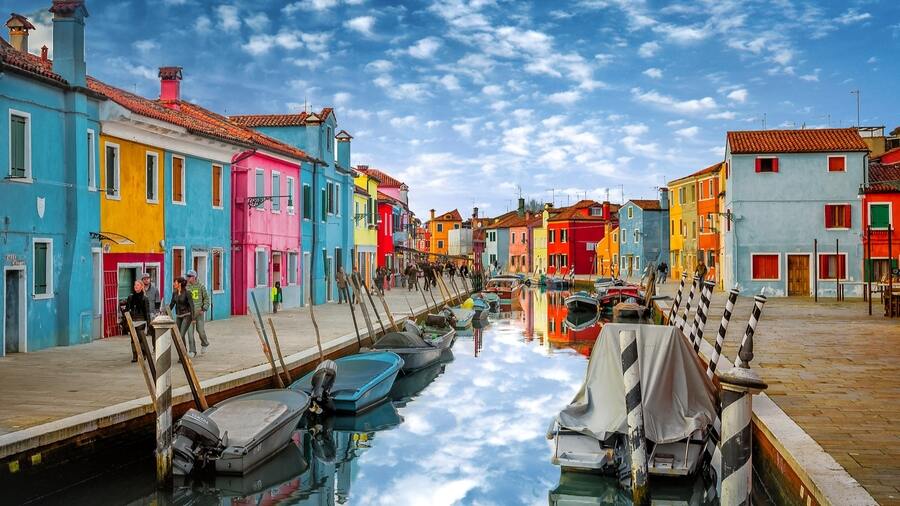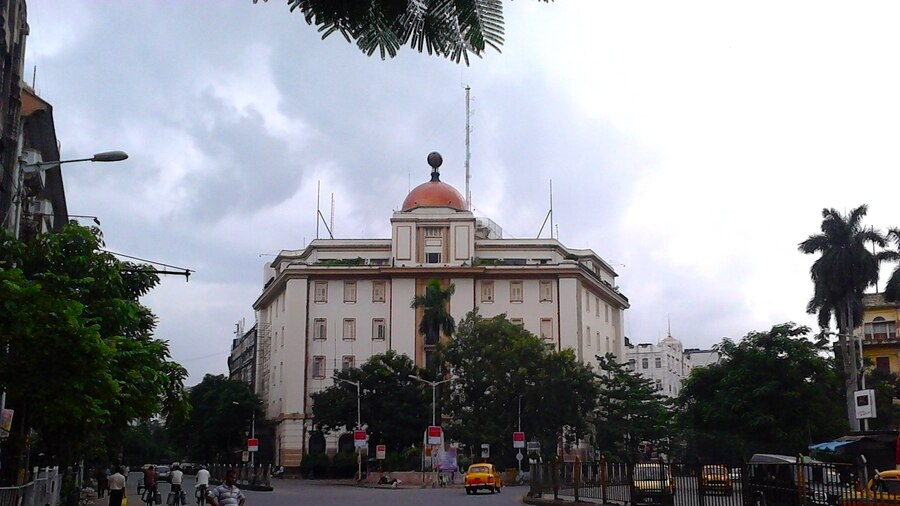The express ferry cruises its way through Canal Grande, its placid waters a translucent copper sheet in the pale glow of the morning sun. Majestic mansions and medieval cathedrals with their ornate facades, spires and turrets slide by on both sides in a prismatic melange.
Italy is strewn with incredibly beautiful islands, but Burano is the most colourful of them all. On a sojourn in Venice — marvelling at the architecture Saint Mark’s Basilica while feeding the pigeons at Piazza San Marco, wandering less-touristy neighbourhoods and sipping prime coffee or Italian chardonnay at a cafe — I take a vaporetto (Venetian water taxi or water bus) for Burano.
Rainbow town

Wrapped in medieval legends, Burano retains a fairy-tale charm Sugato Mukherjee
It is believed that the multihued facades of the houses lining the shores helped the fishing folk of Burano to navigate their way home through the morning fog when they returned with their day’s catch.
The rainbow palette was synchronised in such a way that they could distinguish their own house from that of their neighbours. In fact, the local law still prohibits the use of any colour other than the existing, prefixed shade when repainting. A thriving tourism scene can well be the reason for this, but it has definitely helped retain the island’s fairy-tale charm.
It’s midweek and having had an early start from Venice, I find Burano’s waterfront relatively less crowded. A stroll along canals feels like walking through a vibrant painted canvas. The symphony of hues glisten as reflections of the calm waters peppered with fishing boats.
Legends on canvas
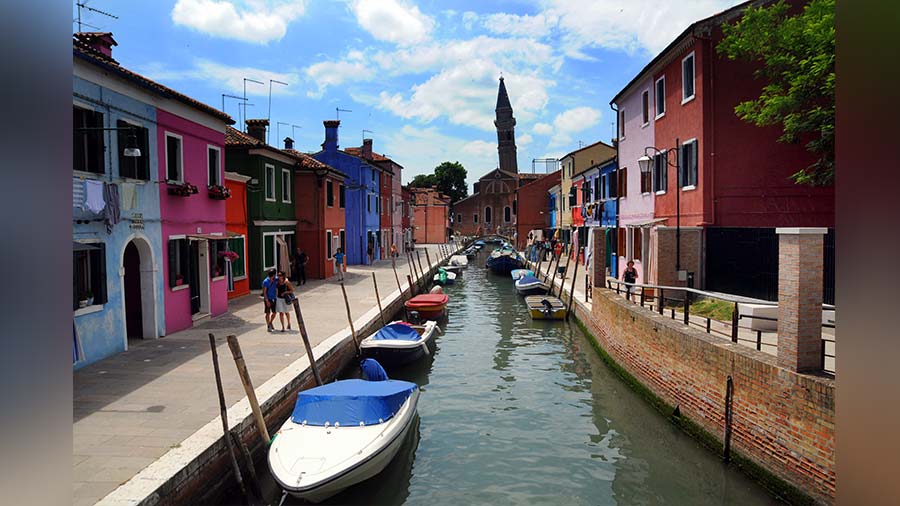
A view of the canal-lined streets of Burano with the tower of San Martino church far ahead Sugato Mukherjee
A short walk brings me to Piazza Baldassare Galuppi, Burano’s town square with the famed San Martino Church perched in the middle. Behind its rather unassuming exterior, this 16th-century Roman Catholic church houses an exquisite painting that depicts a fascinating legend. The story goes that a huge sarcophagus containing the remains of three saints washed ashore in Burano. The gigantic stone coffin was brought to the church by the children of Burano with the divine intervention of the three saints themselves. The sarcophagus now lies protected inside the church and a 17th-century painting illustrates the story. Legend has it that the three guardian saints also intervened to save Burano from the devastating plague outbreak in 1670.
Stories in lace
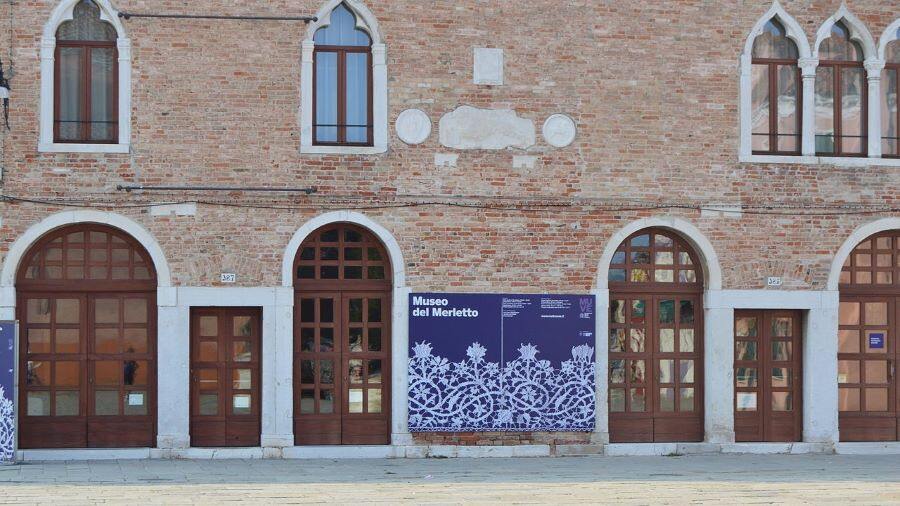
Museo del Merletto or the Lace Museum Wikimedia Commons
My next pit stop is Museo del Merletto or the Lace Museum, just a few steps from San Martino. Located inside the historic palace of Podestà of Torcello on Piazza Baldassare Galuppi, the museum is hosted inside a former lace-making school.
The exhibition downstairs traces the origins of lace making and how the craft spread through Europe. The four rooms upstairs display an extensive collection of glamorous and sophisticated lacework samples in tiered cases. The piece de resistance is an exquisite bridal veil and a christening dress.
An assortment of books, paintings and journals showcase the evolution of the craft from the 16th to the 20th century, and one of the rooms operates as the workstation for local lacemakers. No ladies are at work though, I find only empty seats under old photographs of the lace-making school that operated here till 1970.
A picture with myriad hues
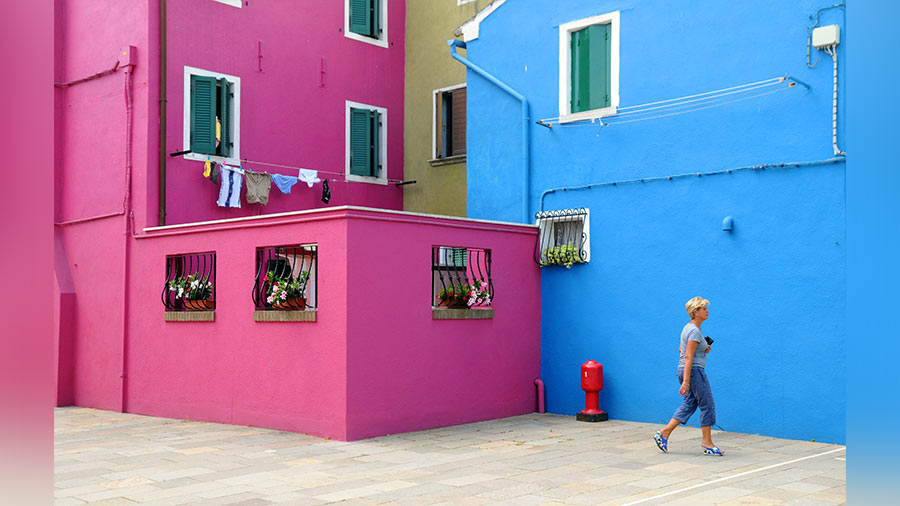
From ochre to ocean blue, and from red to rosy pink, the buildings are of myriad shades that they are not allowed to change even when repainting Sugato Mukherjee
I step out of the museum to sun-kissed Galuppi Square, which is now teeming with tourists. Wedging past the pop-up souvenir stalls, I find my way through the cobbled lanes and quaint wooden bridges to a restaurant on the banks of the green canal. It is an idyllic setting hemmed by multihued square-shaped houses. Local children wheeze past on their bicycles and a motley group of elderly women laugh and chat in front of a door painted fluorescent pink.
The highlight of the scrumptious lunch is risotto di go, a traditional Venetian delicacy invented in the 1500s by the fishermen of Burano. The broth in which the rice is cooked and creamed gets its flavour from goby or gobiidae, a fish found in the Venice lagoon.
On a leisurely stroll back to the ferry station, I stop by the garden beside it to see the sculpture of a young woman in distress. Titled Atessa di Peace (Waiting for Peace), the iconic sculpture is the work of Remigio Barbaro, an eminent 20th-century sculptor from Burano.
Shortly, the vaporetto arrives and I bid adieu to the rainbow island of Italy.
